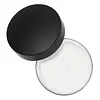What's inside
What's inside
 Key Ingredients
Key Ingredients

 Benefits
Benefits

 Concerns
Concerns

 Ingredients Side-by-side
Ingredients Side-by-side

Ethylhexyl Palmitate
EmollientPolyethylene
AbrasiveLauroyl Lysine
Skin ConditioningDiisostearyl Malate
EmollientTriethylhexanoin
MaskingMica
Cosmetic ColorantDimer Dilinoleyl Dimer Dilinoleate
EmollientCaprylic/Capric Triglyceride
MaskingSqualane
EmollientEuphorbia Cerifera Wax
Silica
AbrasiveC12-15 Alkyl Benzoate
AntimicrobialPolyhydroxystearic Acid
EmulsifyingPersea Gratissima Oil
Skin ConditioningGlyceryl Hydrogenated Rosinate
Bis-Diglyceryl Polyacyladipate-2
EmollientHydrogenated Vegetable Oil
EmollientTribehenin
EmollientCaprylyl Glycol
EmollientBehenyl Behenate
EmollientTocopheryl Acetate
AntioxidantPentaerythrityl Tetra-Di-T-Butyl Hydroxyhydrocinnamate
AntioxidantCeramide Ng
Skin ConditioningAlaria Esculenta Extract
Skin ProtectingLavandula Stoechas Extract
MaskingTocopherol
AntioxidantPalmitoyl Hexapeptide-12
Skin ConditioningCI 77491
Cosmetic ColorantCI 77492
Cosmetic ColorantCI 77499
Cosmetic ColorantCI 77891
Cosmetic ColorantCI 19140
Cosmetic ColorantCI 77007
Cosmetic ColorantEthylhexyl Palmitate, Polyethylene, Lauroyl Lysine, Diisostearyl Malate, Triethylhexanoin, Mica, Dimer Dilinoleyl Dimer Dilinoleate, Caprylic/Capric Triglyceride, Squalane, Euphorbia Cerifera Wax, Silica, C12-15 Alkyl Benzoate, Polyhydroxystearic Acid, Persea Gratissima Oil, Glyceryl Hydrogenated Rosinate, Bis-Diglyceryl Polyacyladipate-2, Hydrogenated Vegetable Oil, Tribehenin, Caprylyl Glycol, Behenyl Behenate, Tocopheryl Acetate, Pentaerythrityl Tetra-Di-T-Butyl Hydroxyhydrocinnamate, Ceramide Ng, Alaria Esculenta Extract, Lavandula Stoechas Extract, Tocopherol, Palmitoyl Hexapeptide-12, CI 77491, CI 77492, CI 77499, CI 77891, CI 19140, CI 77007
 Reviews
Reviews

Ingredients Explained
These ingredients are found in both products.
Ingredients higher up in an ingredient list are typically present in a larger amount.
This ingredient is an emollient, solvent, and texture enhancer. It is considered a skin-softener by helping the skin prevent moisture loss.
It helps thicken a product's formula and makes it easier to spread by dissolving clumping compounds.
Caprylic Triglyceride is made by combining glycerin with coconut oil, forming a clear liquid.
While there is an assumption Caprylic Triglyceride can clog pores due to it being derived from coconut oil, there is no research supporting this.
Learn more about Caprylic/Capric TriglycerideEthylhexyl Palmitate, also known as octyl palmitate, is created from 2-ethylhexyl alcohol and palmitic acid. It is a fatty acid ester.
The fatty acid content of Ethylhexyl Palmitate makes it an emollient. Emollients help soften and hydrate your skin by trapping moisture within.
Ethylhexyl Palmitate is also used to help improve the texture of cosmetics. It helps other ingredient dissolve in products and help disperse ingredients more evenly.
You'll likely find this ingredient in sunscreen, as it is often used to mix UV-blocking ingredients such as avobenzone and ethylhexyl triazone.
It can also help stabilize the fragrances in a product as a fragrance fixative.
Ethylhexyl Palmitate can be used to substitute mineral oil.
Due to its high fatty acid content, it may not be fungal-acne safe.
Learn more about Ethylhexyl PalmitateThis ingredient comes from a fatty acid (lauric acid) and amino acid (lysine). It is used to add a silky feel to cosmetics.
According to a manufacturer, its fatty acid base leaves a silky feeling on the skin. It also has emollient properties because of this. Emollients help soften skin by preventing water from evaporating.
Lauroyl lysine is barely soluble in water.
Learn more about Lauroyl LysineMica is a naturally occurring mineral used to add shimmer and color in cosmetics. It can also help improve the texture of a product or give it an opaque, white/silver color.
Serecite is the name for very fine but ragged grains of mica.
This ingredient is often coated with metal oxides like titanium dioxide. Trace amounts of heavy metals may be found in mica, but these metals are not harmful in our personal products.
Mica has been used since prehistoric times throughout the world. Ancient Egyptian, Indian, Greek, Roman, Aztec, and Chinese civilizations have used mica.
Learn more about Mica